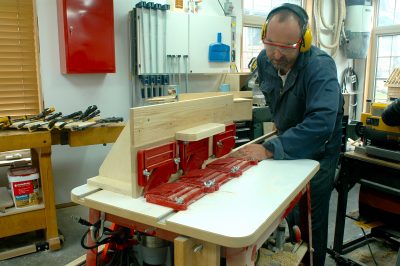Cooling a Duct-Free Home
Q: What’s the best way to cool my duct-free house? It’s got electric baseboard heaters, so there’s no central ventilation system.
A: There’s always the option of a window air conditioner, but these are a pain because they either need to be put in and taken out each year (and stored during the winter), or permanently installed with modifications to walls or windows. Avoiding this trouble is one reason ductless, mini-split air conditioners are growing in popularity. They’re made by many companies and have been quite popular in Europe and Asia for years. More and more ductless mini-splits are appearing here in Canada, and for good reason.
All models have an external compressor that gets mounted outside, just like a conventional central air conditioner, but smaller. External mini-split compressors can be mounted on the ground, on exterior walls or flat roofs. No ducts are required indoors, with cooling action delivered to various rooms through a pair of small pipes that connect to a wall mounted cooling unit inside your home. You can have just one of these cooling units installed or several, one in each room. Ductless mini-splits are quiet, effective and surprisingly efficient. Unlike central air, they also allow you to save electricity by cooling specific areas only. They also deliver cool air high up on the wall, which is a better and more efficient place than floor registers designed to deliver warm air during winter.
Choosing a Router Table
Q: What should I look for in a router table? I’m planning to save money by making my own trim and molding for my reno job, but I’m confused by all the router tables available.
 A: A router table is a simple, stationary woodworking tool that shapes wood that’s passed over it, and making your own trim with a router table is one of the best ways to save money on a DIY renovation. You can easily “earn” $30 or $40 per hour in terms of the money you’ll save over store-bought trim.
A: A router table is a simple, stationary woodworking tool that shapes wood that’s passed over it, and making your own trim with a router table is one of the best ways to save money on a DIY renovation. You can easily “earn” $30 or $40 per hour in terms of the money you’ll save over store-bought trim.
There are many router tables on the market, but I’ve found the most practical options combine reasonable prices with a full-size design that’s tall enough to sit on the floor during use. If your work space is small, you might consider a benchtop router table because it’s easier to store on a shelf or underneath a bench.
Easier Cottage Water Systems
Q: Is there anything we can do to make it easier to get our water system going at the summer cottage? My husband spent hours this spring pouring water into the pump to get it working, as he does each year. Is there some other kind of system that’s easier on his mood?
 A: The solution isn’t to change your water system (or your husband), but rather to add a little hardware to what you have. The process of adding water to a seasonal system is called priming, and water pumps and intake pipes all need to be filled with water before they can work. The reason for the trouble so many people have priming is the standard approach of pouring into a small hole in the top of the pump. A much easier option involves pushing water up from the end of the pipe nearest the lake or river. Several standard pipe fittings and a valve at the end of the intake line makes priming an absolute breeze. It’s especially easy if you have a neighbour with a year-round water system and a garden hose you can connect to. Watch this instructional video.
A: The solution isn’t to change your water system (or your husband), but rather to add a little hardware to what you have. The process of adding water to a seasonal system is called priming, and water pumps and intake pipes all need to be filled with water before they can work. The reason for the trouble so many people have priming is the standard approach of pouring into a small hole in the top of the pump. A much easier option involves pushing water up from the end of the pipe nearest the lake or river. Several standard pipe fittings and a valve at the end of the intake line makes priming an absolute breeze. It’s especially easy if you have a neighbour with a year-round water system and a garden hose you can connect to. Watch this instructional video.


